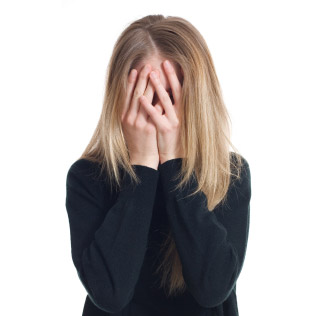
Acne is one of the most common skin disorders in America, with over 25 million people effected. Acne and pimples are caused when dead skin cells and oil combine on the face. These dead skin cells are shed naturally, however, some people shed their cells faster than others, and an excess of dead skin cells add to the amount of material that mixes with oil on the face. Eventually, this mixture of oil and skin cells clogs the pores, and it is at this point that a clogged skin pore becomes an inviting home for bacteria. Once the body has detected that a foreign object or impurity has invaded, white cells are deployed to neutralize it. This reaction soon produces an acne pimple.
The two types of acne
There are commonly two kinds of pimples, blackheads and whiteheads. Blackheads, also known as open comedones, are caused by a blockage in the hair canal, resulting in a solidified oil buildup. Whiteheads, or closed comedones, occur within the sebaceous follicle (skin pore), producing a white top. Keep in mind that there's absolutely no difference between face and body acne. Pimples can occur anywhere on the body, except on the palm of the hand and sole of the foot, as these are the only places on the body where there is no hair, and therefore, there are no hair canals. They do, however, tend to appear on the face, chest, back, neck, arms, and buttocks. The causes of body acne are the same as of face acne.
Teenage and adult acne
Since hormones determine the size of the sebaceous (oil producing) glands in the skin, teenagers, with their elevated levels of hormones, tend to experience a marked increase in the size of their sebaceous glands, which in turn produces excess sebum, or oil. And it's this excess oil produced by the skin that's the main cause of teenage acne. However, the idea that pimples and acne are only a teenager's problem is misguided. For approximately 30% of teenagers afflicted with acne, the condition carries on into adulthood. And while hormone levels equalize in adulthood, the production of high levels of androgens can still stimulate the sebaceous glands to over-produce oil.
Cleansing
People susceptible to acne breakouts should wash their face regularly (at least twice a day), with a gentle cleanser that's been specifically formulated for oily skin. It is also just as important not to over-wash the skin or scrub too hard, as doing so can over-exfoliate, dry out or irritate the skin, making the acne worse. It is also advisable to use a dermatologist-approved, oil-free moisturizer that will not clog your pores. Another thing someone with acne needs to keep in mind is to avoid touching his or her face. Bacteria accumulate on the hand, and frequent touching of the face can lead to the development of acne.
Shaving
While shaving itself cannot cause acne, shaving with a dull blade or the wrong type of shaving cream or gel can. Prevent your skin from getting nicked or irritated by using a sharp blade, and make sure to use high-quality shaving product. For shaving your face, we recommend Brave Soldier Brave Shave, the finest richest créme available. For body shaving we recommend Brave Soldier Shower Shave. Both products are non-irritating, curative and conditioning. Formulated to stimulate cell defense mechanisms, they raise active topical metabolism and provide anti-inflammatory relief to tender skin.
Extraction
Popping pimples or extracting blackheads is not a good idea. Squeezing blackheads will cause them to become inflamed and popping whiteheads will most likely push the germs and bacteria further into the skin, resulting in soreness, redness and an even worse infection, even scarring.
Scarring
Most acne does not cause scarring, however, those with cysts and deep inflammatory papules are at a higher risk of developing permanent scars. To minimize the risk, it is important to maintain proper hygiene, to not attempt to pop or squeeze pimples, and if the acne gets worse, despite your best efforts, to seek treatment.
